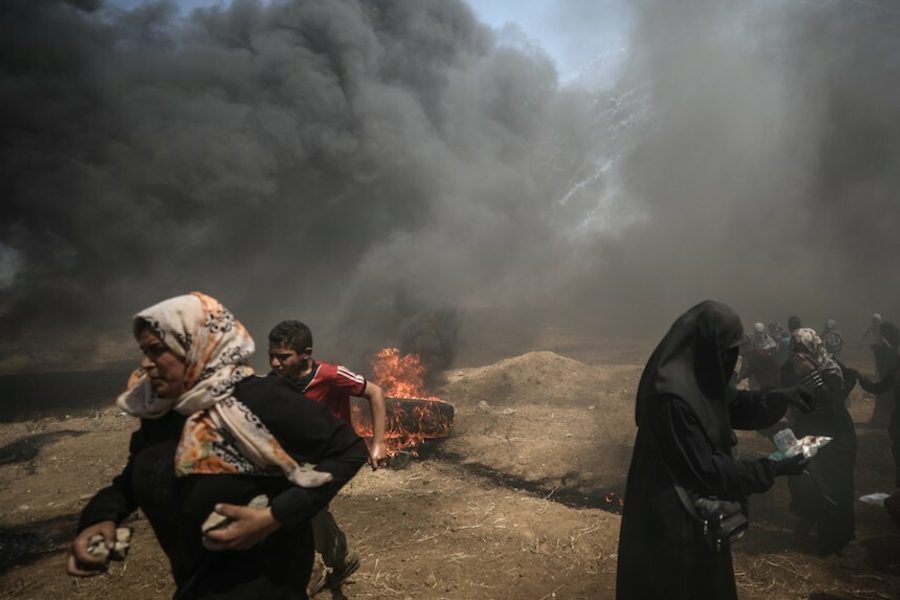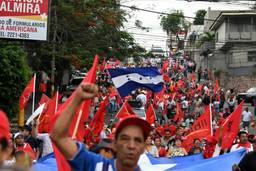These Statistics Show Why Gazans Are Risking Their Lives To Protest Israel
The humanitarian crisis and the current death toll.
Sasha Kramer

Since March 30, mass protests have engulfed the areas along the Israel-Gaza security barrier. Ten thousand or more Palestinian protesters have gathered each Friday to call for an end to the 11-year blockade by Israel and Egypt. The protests, dubbed the Great March of Return, are scheduled to last until May 15, to mark the 70th anniversary of Israel’s Independence Day. Palestinians refer to the day as al-Nakba (The Catastrophe), signifying the displacement of 750,000 people from their homeland in 1948.
Gaza has long been stained by death and violence, and the protests have been no exception. Israeli Security Forces (ISF) have unleashed tear gas, sniper fire and rubber bullets on Palestinian protesters. May 14 was the most violent day to date, with Israeli forces killing more than 50 Gazans and wounding thousands. The Israeli government has justified its violence by tying the protests to Hamas, but experts like Palestinian-American human-rights lawyer Noura Erakat say the protests are a grassroots effort — and argue that political affiliations do not justify Israel’s armed attacks against a civilian population.
Thanks to the blockade, a humanitarian crisis has ravaged Gaza. Two million Palestinians are trapped with little access to food, clean water or services. Seventy percent of the population relies on outside humanitarian aid, which dwindled when the Trump Administration cut $65 million in funding to the United Nations Relief and Works Agency, and then withheld $45 million in promised food aid to both Gaza and the West Bank.
Below is a statistical snapshot of Gaza’s humanitarian crisis and the violent crackdown on protesters.
Gaza by the Numbers
-
2007 Year Israel imposed a land, air and sea blockade on Gaza
- 76% Reduction in Gazan imports after the blockade
- 151 Import items, including cement and pipes, prohibited because of “dual use” for military purposes
- 84% Portion of supplies for water, health and sanitation infrastructure denied by Israel, according to Oxfam
- 97% Portion of drinking water in Gaza that is unsafe
- 6-8 Daily hours of electricity Israel supplies to Gaza
- 61:1 Ratio of Palestinians to Israelis killed in Gaza since 2009
- 181 Times between January and March that ISF shot at Gazan fishers and farmers who strayed into “access restricted areas,” killing two and wounding 13
- 35,000 Palestinians who rallied in Gaza March 30, the first day of mass action against the blockade
- 101 Protesters killed in Gaza by Israeli security forces since March 30, as of May 14
- 8,400 Gazans wounded in the protests since March 30, as of May 14
- 52 protesters killed and 2,400 wounded in a single day, May 14, when Gazans protested the relocation of the U.S. Embassy to Jerusalem from Tel Aviv
- 2 Journalists killed in the protests; 29 injured, according to reports by the Committee to Protect Journalists. All were Palestinian.
- 0 Israeli security forces killed in the protests








